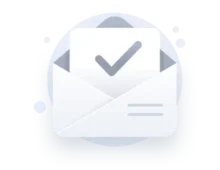Introduction
Nuclear power workers are exposed to a host of safety concerns that range from musculoskeletal issues related to improper working postures to radiation exposure and biohazard contamination. While some of these risks can be successfully mitigated through safety awareness campaigns, the majority require specialized equipment and behaviors that are specific to each situation.
Potential Hazards
The most common risks in nuclear power work include:
Exposure to Radiation.
Ionizing radiation safety is one of the kernel concerns for nuclear power workers, since these electromagnetic waves were found to be carcinogenic at high doses. Long-term exposure to low doses is also dangerous, as it is associated to cataract formation, DNA changes, and free-radical production. Distance, exposure time, and appropriate shielding are crucial when dealing with radiation exposure. Because the developing human body is more susceptible to any amount of harmful radiation, safety precautions for pregnant workers are much steeper. Embryos exposed to more than 50 rads have been shown to suffer a significant reduction in cognitive abilities after birth, and more.Exposure to Biohazards.
Exposure to micro-organisms such as bacteria, viruses, or fungi can lead to allergic reactions, infections, and illnesses. Environmental factors such as humidity, temperature, or growth factors affect the viability of these biohazards, although some can survive even in the most hostile of conditions. The clinical setting is where most nuclear power workers come in contact with such germs. Given the highly virulent and pathogenic nature of the latter, avoiding person-to-person contact and personal protective equipment are the only line of defense for employees.Musculoskeletal Disorders.
Whether it’s carrying heavy loads in a plant, sitting down for extended periods of time, or performing a series of repetitive activities with improper form, statistics show that nuclear technologists are exposed to an increased risk of developing MSDs. The latter include chronic back pain, carpal tunnel syndrome, epicondylitis, and other related afflictions. Without appropriate information on correct posture and safe lifting techniques, nuclear employees face a high probability of developing one or more MSDs.Physical Hazards.
Although nuclear meltdowns are the most mediatized industry accidents, they’re far from being the only physical hazard employees have to deal with. Equipment failure, decay heat, criticality incidents, and human error can all lead to more frequent disasters that can involve explosions, fire outbreaks, and the release of radioactive materials in the nearby environment.
Incident Prevention
Since nuclear workers are exposed to a variety of occupational health risks, their training process is often a lengthy, arduous, and expensive one. Given the dangers these workers exposed to on a daily basis, but also the likelihood that mistakes will result in injuries or fatalities, it is instrumental that employees receive constant and sufficient safety training.
Understanding the need for personal protective equipment helps nuclear personnel better safeguard their health from radiation and biological hazards. Particularly when working in proximity to equipment that emits ionizing radiation, shielding is often the only barrier between the human body and carcinogenic electromagnetic waves.
It is essential that nuclear environments foster an organizational culture that is centered on safety and reporting, particularly in a market environment where higher workloads have become a constant. Defective nuclear equipment is known to trigger chain-reactions that lead to grave, potentially fatal accidents. At the cost of efficiency, accurate reporting, maintenance, and safety protocols are the only way to prevent serious nuclear accidents from taking place.
Recommended Safety Courses



What You Can Do to Stay Safe
The only way to prevent nuclear workers’ occupational hazards from affecting their health is to make sure that these employees undergo all of the necessary safety training. Canadian businesses are legally required to inform their personnel with regards to all possible occupational risks, as well as to provide access to safety courses that address the latter.
However, most of the safety programs associated with nuclear work can be completed before you are hired as a technician or in a plant. This often helps job candidates better understand their future work environment, while also improving their chances of getting hired.

